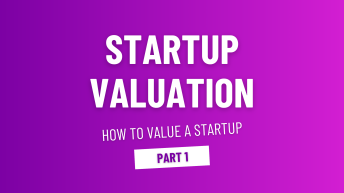Introduction
In the competitive startup landscape, understanding the market size is critical for founders to build a viable business model and attract investors. However, estimating market size requires a blend of strategic thinking and data-driven analysis, particularly within the unique context of the MENA region, where economic diversity and technological adoption vary widely.

Importance of Market Sizing

For MENA startup founders, accurate market sizing helps:
- Assess revenue potential and business viability.
- Make informed decisions about market entry and expansion.
- Communicate potential returns to investors clearly.
Understanding TAM, SAM, and SOM provides a comprehensive view of both the market’s full potential and the portion realistically attainable in the near term.
Key Steps in Market Sizing: TAM, SAM, and SOM
Step 1: Calculating the Total Addressable Market (TAM)
The TAM represents the total revenue opportunity available if a product or service achieved 100% market share.
Methodologies for Calculating TAM
- Top-Down Approach
This approach leverages broad industry data to approximate TAM and is best for new or less specific markets.

Example: For a MENA-based startup developing an e-learning platform targeting working professionals, use data from the global e-learning market, adjusting for MENA-specific demographics. For instance:
- Global e-learning TAM: $200 billion.
- MENA population share: ~7%.
- TAM estimate for MENA: $200 billion * 0.07 = $14 billion.
Pros: Quick estimation using existing industry data.
Cons: Relies on assumptions and broad data, reducing precision.
1.2 Bottom-Up Approach
This method calculates TAM by identifying target customers and multiplying by estimated revenue per customer. It’s often the preferred choice for investor presentations due to its data-driven nature.

Example: A fintech startup in Saudi Arabia targets freelancers for digital payment solutions. Estimated number of freelancers: 300,000. Average revenue per user (ARPU): $150 per year.
- TAM = 300,000 freelancers * $150 = $45 million annually.
Pros: More precise and based on specific data.
Cons: Requires detailed data, which can be time-consuming to gather.
1.3 Value Theory Approach

Here, TAM is derived from the perceived value the solution provides to customers.
Example: For a SaaS platform helping SMEs in Dubai reduce operational costs by 20%, calculate the total SME operational costs in Dubai and multiply by 20%. If operational costs are $2 billion, TAM = $2 billion * 0.20 = $400 million.
Pros: Reflects the actual value generated for customers.
Cons: Subjective, as perceived value varies by customer.
Step 2: Calculating the Serviceable Available Market (SAM)
The SAM is a subset of the TAM, representing the portion of the market that a startup’s product or service can serve, factoring in geographic, demographic, and economic considerations.
2.1 Refining TAM into SAM
For example, if the e-learning platform’s TAM in MENA is $14 billion, focus on the professional upskilling market in Saudi Arabia and the UAE, where demand is higher due to government-led digital initiatives.
- MENA TAM for e-learning: $14 billion.
- Assume Saudi Arabia and UAE represent 50% of the market due to their high digital adoption.
- SAM = $14 billion * 0.50 = $7 billion.
2.2 Geographic and Demographic Adjustments
Consider specific industry needs within the MENA region. For instance, digital payments for unbanked populations in Egypt may serve a substantial SAM due to the high percentage of unbanked individuals (about 67%).
Example Calculation: If Egypt’s unbanked market is estimated to be worth $1 billion and a fintech targets this segment with digital wallets:
- SAM = $1 billion * estimated penetration rate of target market (e.g., 30%) = $300 million.
Practical Tip: For MENA-based startups, leverage government reports or local market research from platforms like Statista or IMF reports to refine SAM calculations.
Step 3: Calculating the Serviceable Obtainable Market (SOM)
SOM represents the portion of the SAM that a startup can realistically capture, considering competitive landscape, resources, and execution capabilities.
3.1 Estimating SOM through Market Penetration
Estimate SOM based on realistic market share assumptions.
Example: For a digital payment’s solution in Saudi Arabia:
- SAM for digital payments: $1 billion.
- Projected market share: 5% within three years due to high competition.
- SOM = $1 billion * 0.05 = $50 million.
3.2 Using Benchmarks for Market Penetration Rates
Consider market penetration rates for comparable companies. If a successful MENA-based e-commerce startup captured 10% of its SAM within five years, aim for a similar target, adjusting for industry specifics.
Case Study: Applying TAM, SAM, and SOM for a Fintech Startup in the MENA Region
Startup Overview
A fintech startup in Egypt focuses on providing micro-loans to the unbanked population. The goal is to estimate the market size accurately to plan funding and product development.
Step 1: Calculating TAM
Use the bottom-up approach:
- Total unbanked adult population in Egypt: 30 million.
- Average annual loan amount per person: $100.
- TAM = 30 million * $100 = $3 billion.
Step 2: Calculating SAM
Limit the TAM to Egypt’s low-income earners who meet loan eligibility:
- Low-income adults eligible for micro-loans: 50% of unbanked population.
- SAM = 30 million * 0.50 * $100 = $1.5 billion.
Step 3: Calculating SOM
Estimate the startup’s achievable share within five years, targeting a 3% market share due to competitive pressures and marketing limitations.
- SOM = $1.5 billion * 0.03 = $45 million.
Through this market sizing process, the fintech startup has a clear view of potential revenue, guiding both strategic planning and investor discussions.
Conclusion

Accurate market sizing empowers MENA startup founders to set realistic goals, allocate resources wisely, and attract investment. By following structured methods to calculate TAM, SAM, and SOM, founders can present a compelling, data-driven business case. This white paper serves as a practical guide for leveraging market size metrics, ensuring that startups align with market demand and position themselves for sustainable growth in the MENA region.
🚀 Ready to fuel your startup’s growth? Join multiples.cc today! Gain access to valuable tools, connect with investors, and get personalized support to help you succeed on your fundraising journey. Sign up now and take the next step toward securing the resources your startup needs to thrive!






Add comment